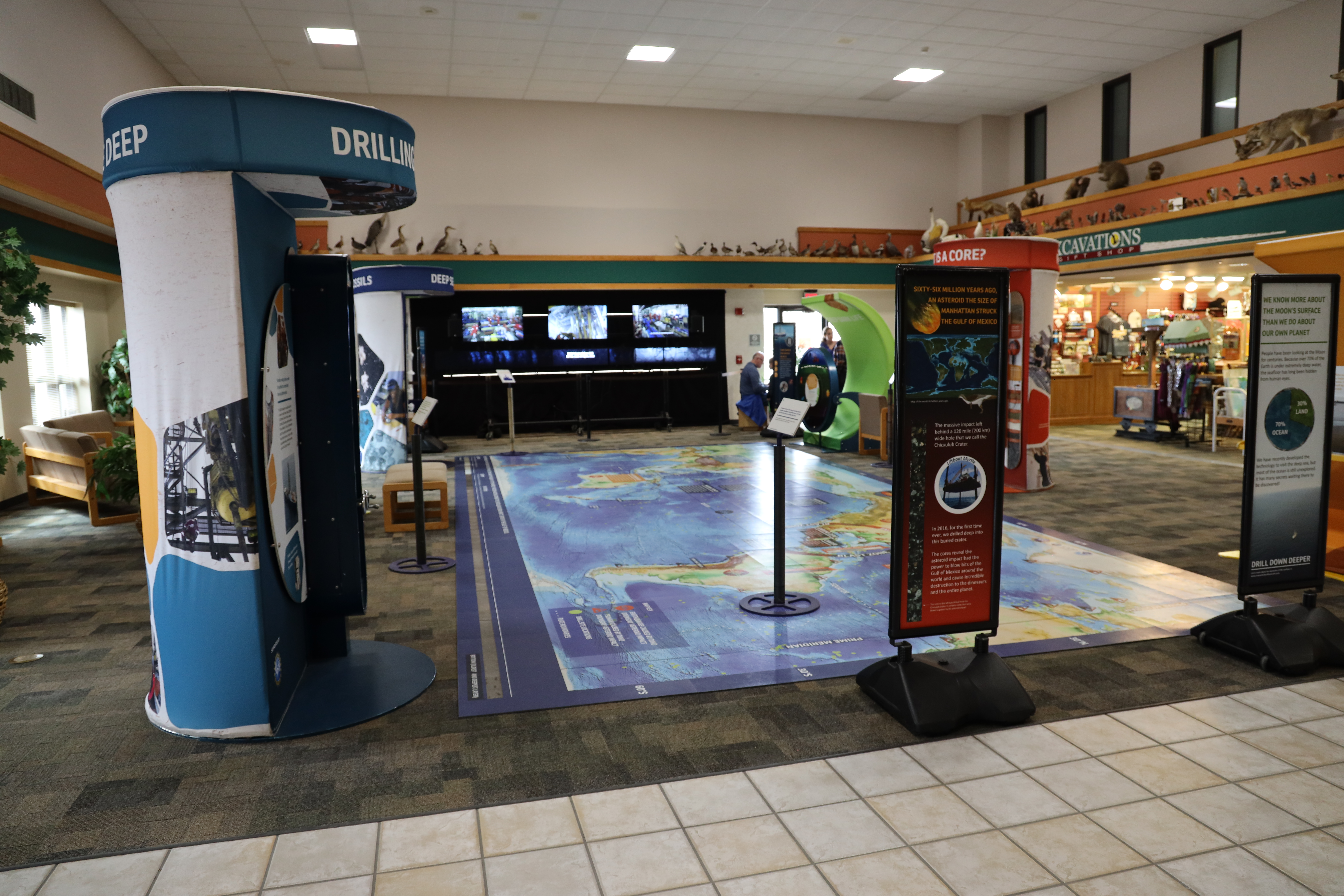BY RAEGAN NEUFELD
On display at the Sternberg Museum of Natural History since February 25th, In Search of Earth’s Secrets is an interactive, hands-on exhibit that teaches viewers about how Earth has changed over time. According to Museum Director Reese Barrick, the traveling exhibit tells the story of an international ocean drilling project.
“There’s a ship that has gone around for the last 50 years drilling cores,” he said.
‘Cores’ are simply samples of material that have been removed from the seafloor for examination.
“Those cores have all the secrets of the earth’s history,” Barrick said. “This exhibit is basically a way of interacting to understand what scientists are learning about Earth’s history from these cores.”
The interaction between patrons and In Search of Earth’s Secrets begins with a choice of several videos. These videos depict different animals that lived millions of years ago. From there the experience becomes more hands-on. For example, one feature of the exhibit is a station where visitors can drop a ping pong ball down a plinko-style board, which demonstrates how animals dig into the ocean floor for food.
There’s also a floor-sized map that shows the oceans of the world and where the drilling project has taken place. According to Barrick, the ship even traveled near the crater that caused the extinction of the dinosaurs.
Another feature, which Barrick described in detail, is a magnetic attraction.
“You take a magnet, run it up and down an actual rock core, and it will flip back and forth so you can see through time how the earth’s magnetic poles have changed. That’s kind of cool, and helps us with all kinds of interesting things, like how the earth’s poles are close to reversing again,” he said.
As mentioned, all of these displays help viewers understand how the earth has changed. But why is this important?
“The earth has changed a lot through time,” Barrick said. “Some of those changes have been cyclical, they have cycles that go back and forth, and some things have been changing in a certain direction for long periods of time. These secrets will tell us about not just Earth’s climate, but changes with the number of catastrophes, such as tsunamis or meteorite impacts, that have hit and affected the planet, as well as how large those effects are.”
The National Science Foundation, which funds In Search of Earth’s Secrets, knew this and wanted to spread the information.
“This is the most expensive project over the last 50 years that the National Science Foundation has funded. The thing is, there’s so much information and so much that we’ve learned about Earth’s history, that they wanted to make sure everybody knows about it,” Barrick said. “It’s also about the ocean, and we’re in Kansas, as far away from the ocean as we could get, so we thought it was really important to bring it out. It also gives people here a chance to really get an idea of what’s going on around the world.”
Barrick also believes that this project helps people correlate changes in time to changes in life.
“Understanding how everything correlates together is really important for us when trying to plot our future.”
In Search of Earth’s Secrets will only be at the Sternberg Museum until March 30th, and from there it will go to the Deines Cultural Center in Russell in early April. However, the exhibit will be making its way back to the museum in July and will be displayed for the whole month.
“It’s built for the whole family,” Barrick concluded. “They even made it so there’s Spanish on one side and English on the other, so if there’s Spanish speakers they’ll have a chance to read the information too. It’s a really well-put-together exhibit and it’s a lot of fun for everyone.”





